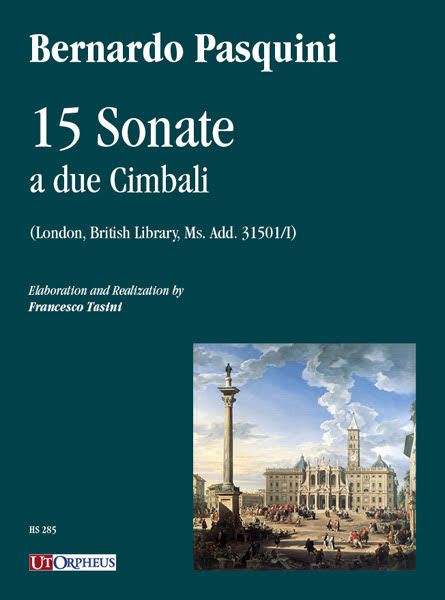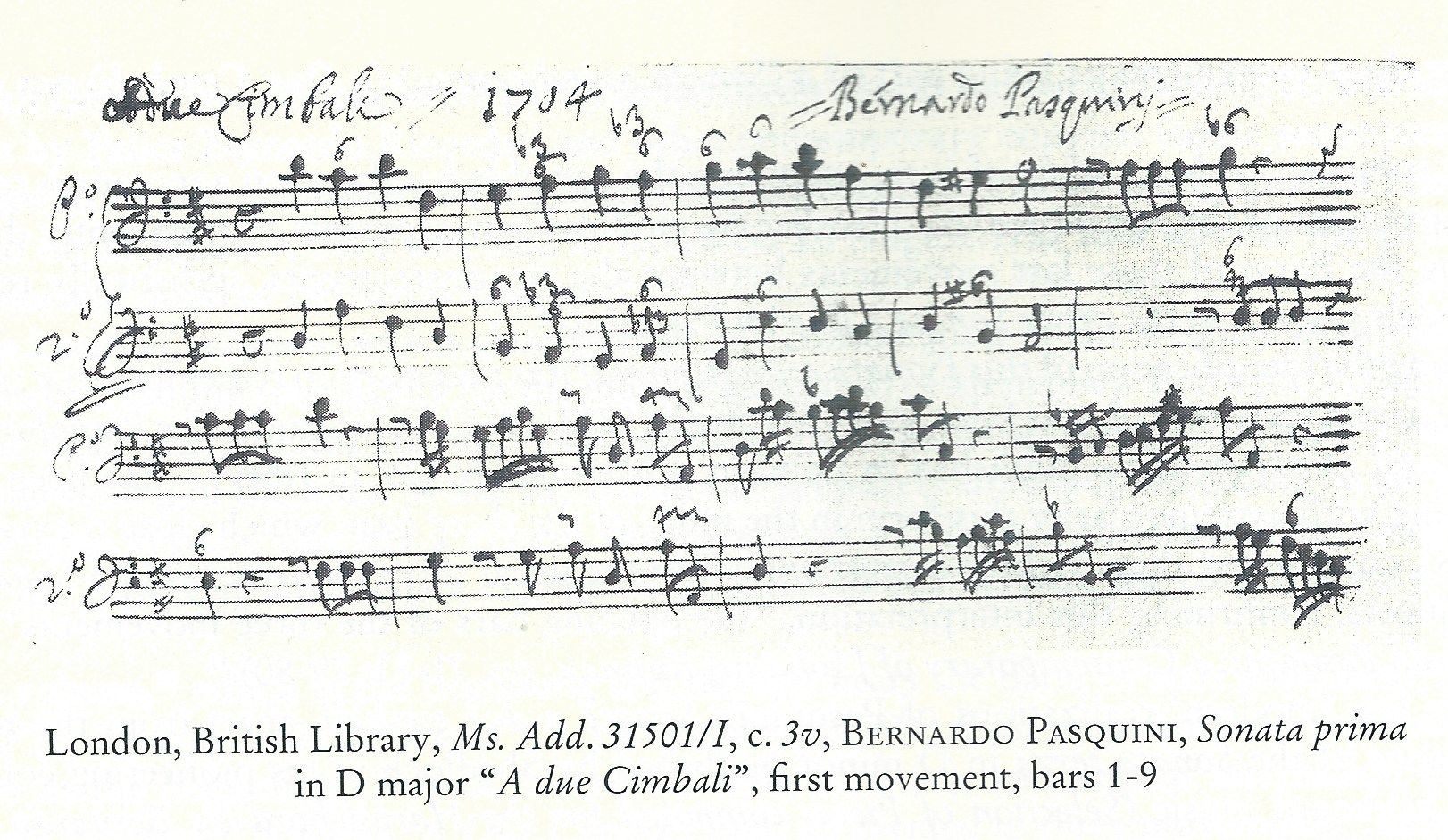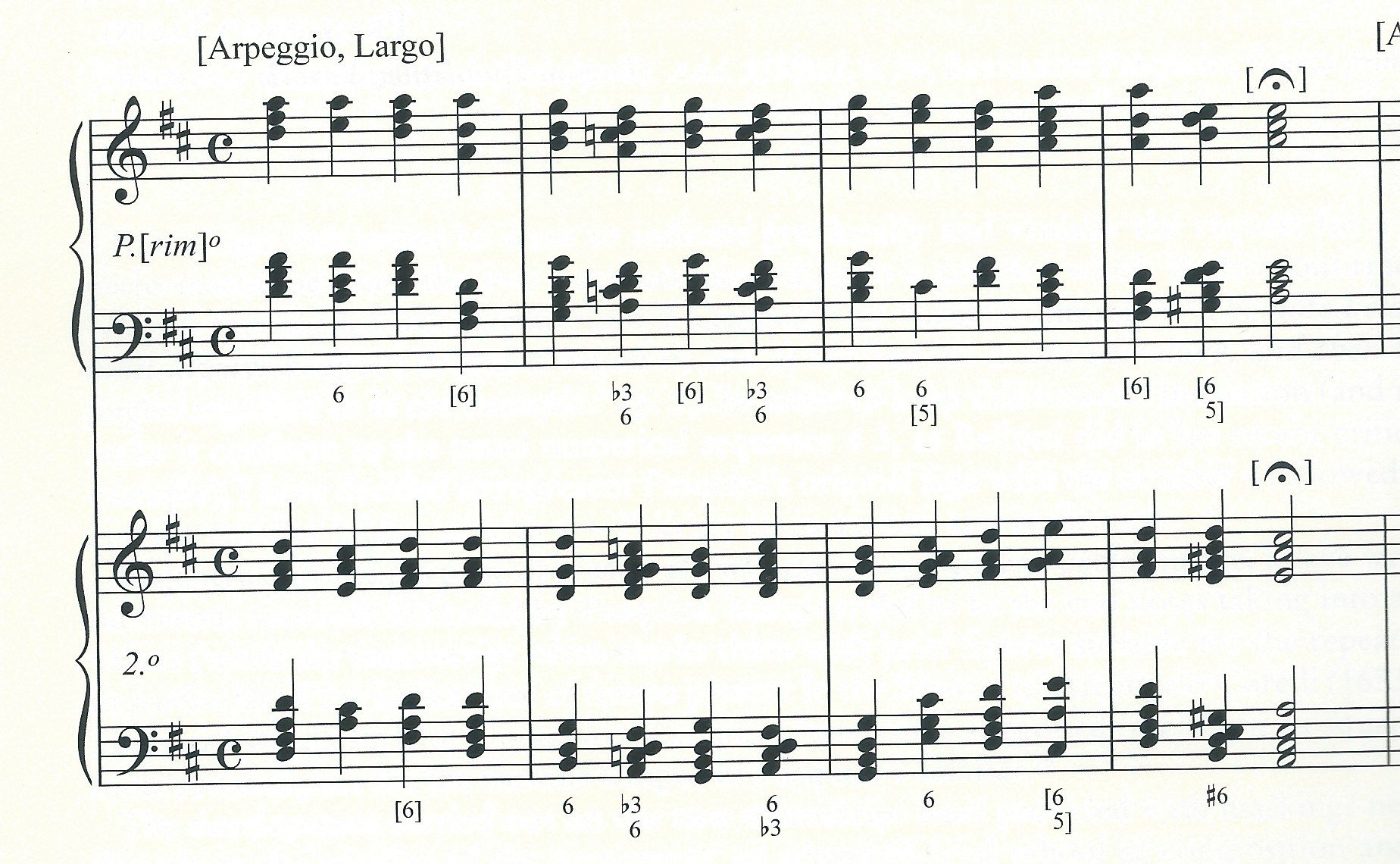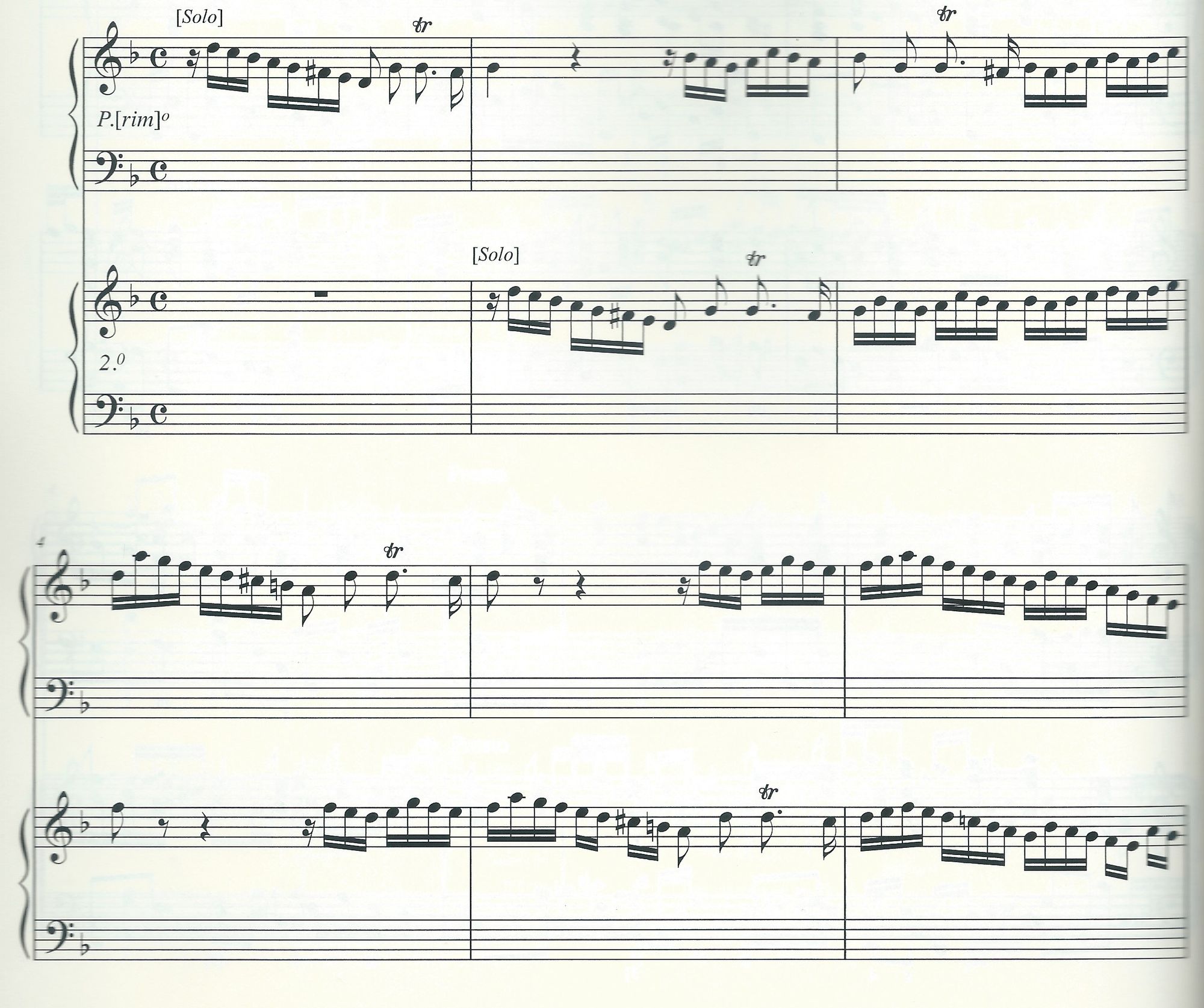Pasquini Revisited: score review
This is more than a score, it is a veritable instruction booklet; students can learn huge amounts as to style, improvisation and more

This post follows on from Classical Explorer's post Discovering Bernardo Pasquini. The score of the 15 Sonate a due cembali (London, British Library, Ms. Add. 310501/2) is the basis for this "elaboration and realisation" by Francesco Tasini.
The Introduction (given in both Italian and English) is a scholarly model of its kind, extensively footnoted and itemising the challnges an edition such as this presents.
We can see the transition from MS to score (and hear the performers' realisation of that score) below. Firstly, the original manuscript in its figured bass only format:

... and then let's look at those very first bars in the score realisation, where the figured bass in s retained but the chords are filled in above:

... and now let's hear Marina Scaiolo and Francesco Tasini as they perform those bars - the editorial edition above, "Arpeggio" is certainly adhered to; and the performers add yet more decorations. The chordal section lasts for around the first 45 seconds:
The score is beautifully laid out, impeccably clear. This is more than a score, it is a veritable instruction booklet; students can learn huge amounts as to style, improvisation and more. Take the fugal writing, for example, what the foreward tells us is "partimento-fuga," a rather flexible type of fugue with figured bass (the figured bass kicks in when we arrive at the lassage marked "tutti" just after the quote):

... and let's hear this in the Tactus performance, and enjoy the richness of that figured bass tutti at 27 seconds in:
You can try to hear similar processes in Sonatas Nos. XI and XII - a nice exercise is to try to hear the solo and tutti aspects without the score. In both of those examples, the process is somewhat "telescoped" from the example above, so the move from solo to tutti happens on a much shorter timescale.
In No. XI, the tutti for the Primo part starts before the Secondo has finished giving out the theme, and we can hear that figured bass filling out of texture a mere six seconds in:
Further music examples from the score are available at this link and may be cross-referenced with either YouTube or Spotify.
Following a score along with a piece of music is always illuminating; this process of marrying the superbly musical performances from Marina Sciaoli and Francesco Tasini with the beautifully presented score is particularly enriching, while enhancing our appreciation in the skill required to being thsi release to life.
All excerpts from the score, Editions Ut Orpheus HS 285 and are reproduced by kind permission.
And finally, more information on the Partimento-Fuga can be found in an excellent article by Maxim Serebrennikov, From Partimento Fugue to Thoroughbass Fugue: New Perspectives, in the journal Bach, Volume 40/2, pp. 22-44 (if you follow the link you may have to register with JSTOR, but you get 100 free articles when you do so).
An enriching experience, for sure. The more I look at the score the more I find: keyboardists might want to explore!
The link below is for purchase of the score at Ut Orpheus Edizioni's website. I've included an Amazon link to the Tactus disc as well as the Spotify listing below.


